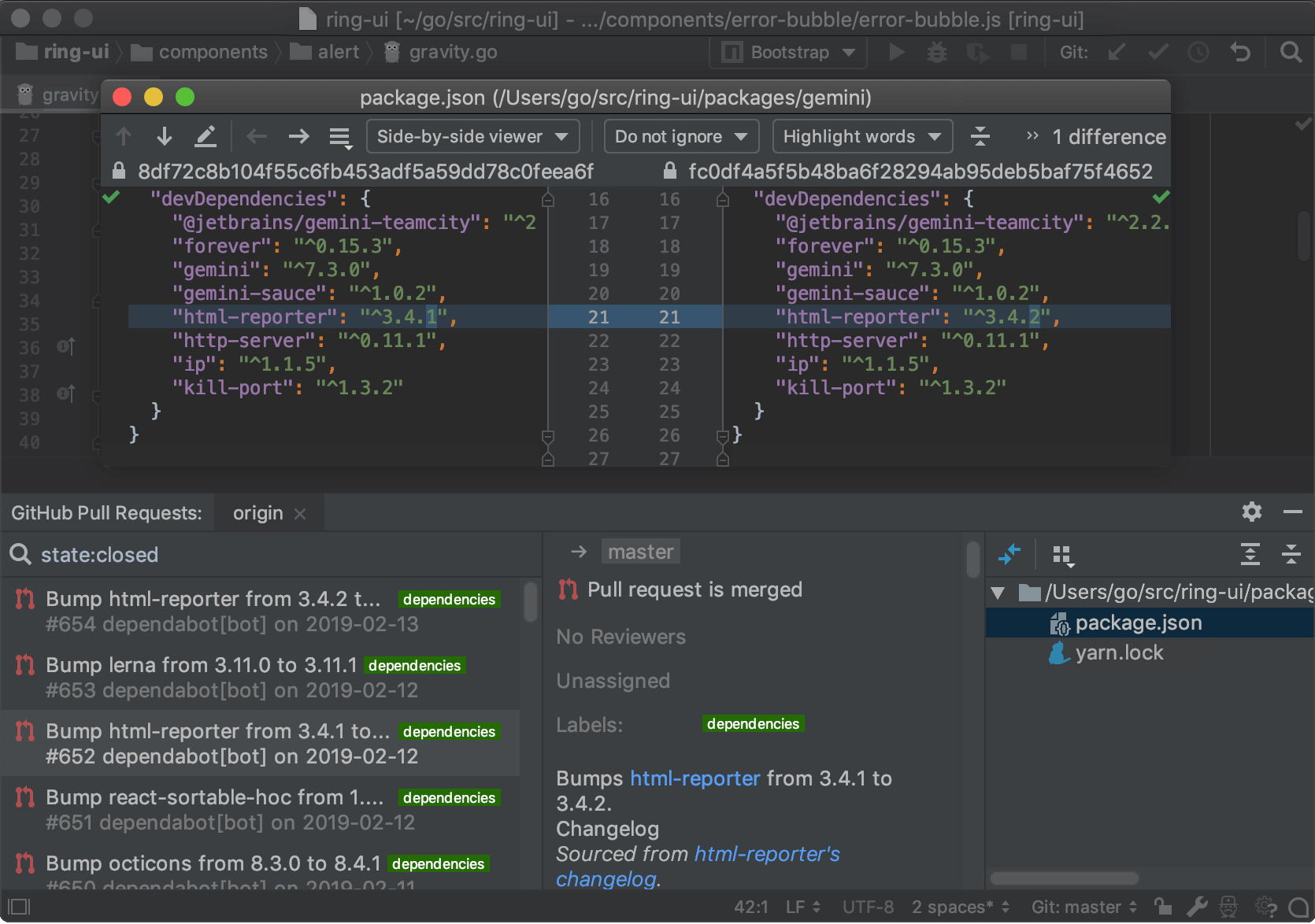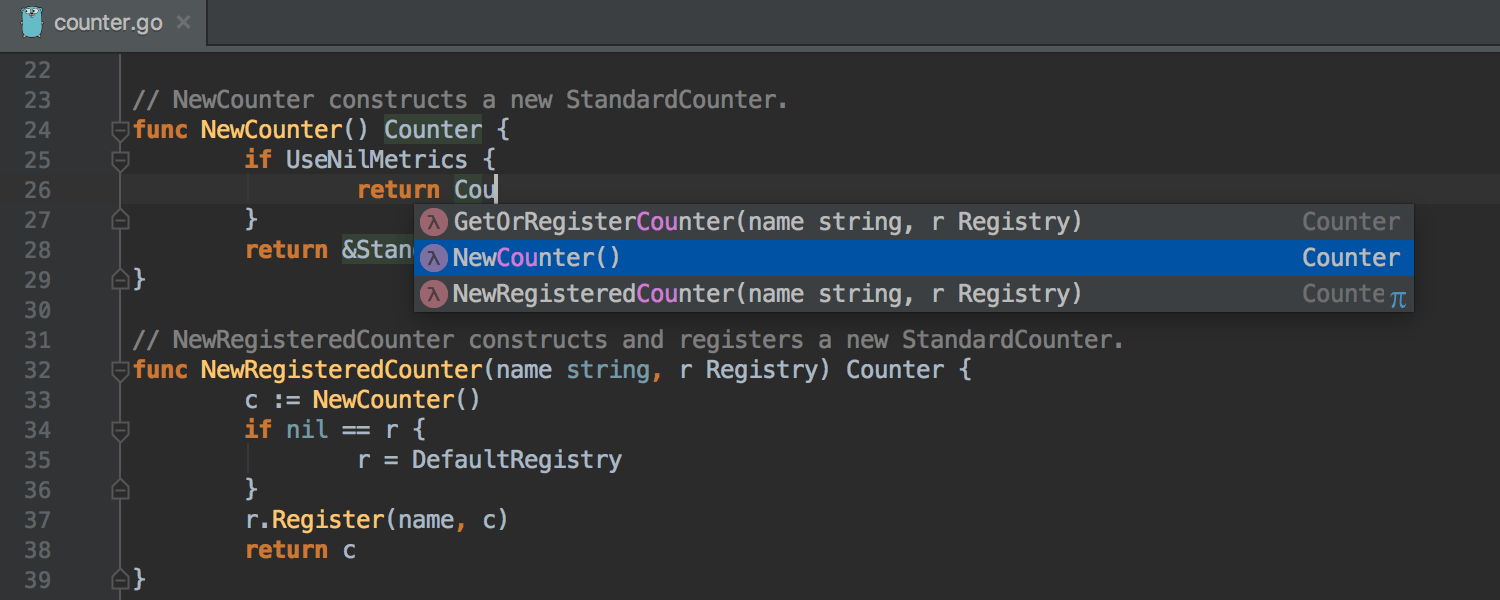

Most of those features are common to IDEs, but integrations with Docker, Git, and a Terminal are some of the handier features you might not get elsewhere without plugins. GoLand has a long list of built-in features. And best of all, you can try it for free. IntelliJ’s experience does come with a price tag, but it is well within the scope of affordable, starting at $89 for the first year for a personal license. When using GoLand, you can feel confident it is backed by years of experience by one of the best in the business. IntelliJ is a company with a robust portfolio of excellent IDEs. Other options, such as Sublime, Atom, or Vim, don’t pack the power a fully integrated development environment can have. There are plenty of other IDEs that you can use to develop in Go, so why choose GoLand? Some IDEs offer Go support using plugins and extensions, which means that they have shortcomings to the specific needs of a Go developer. GoLand by IntelliJ is a cross-platform IDE built specifically for GoLang developers. If you’re anything like me, this list will give you a good starting point to find the GoLand plugins to improve your coding experience. When I start using a new IDE, I don’t look for plugins. Plugins can provide familiarity, add essential features, improve productivity, and support additional languages or file formats.

Fortunately, IntelliJ IDEs offer a quick way to bridge the usability and productivity gap – installing some plugins.
#INTELLIJ GOLAND PROFESSIONAL#
This can be the case with professional Go developers adopting IntelliJ GoLand as their primary IDE.
#INTELLIJ GOLAND CODE#
It might not work like other code editing tools you’re familiar with, or it might be missing some features you’re used to having. Adjusting to a new IDE can be a jarring experience, even if you’re familiar with the programming language it was designed to support. That’s all folks! If you have any questions shoot them below! 😄Įxtra resource to read more on debugging in Intellij / GoLand.

There are some watches for values in it, the value is not present in this context so it doesn’t show up here, but other values show up This is the breakpoint in the text/template library. Here’s how the debug window looks like when on a breakpoint. If you notice the image below (the intellij title bar path), I have a breakpoint in the golang standard library packages text/template and internal/fmtsort Before debugging you need to add breakpoints to your program code - wherever you want to stop the program and see the data present in the variables and you can evaluate expressions too! And while debugging you can add breakpoints on the go and you can add breakpoints anywhere in the program execution! Like even in the standard library code execution! See below for examples of putting breakpoints and how I have put breakpoints in the template golang stdblib and also an example of how the debug window looks like Now you can run it with the play icon button or debug it with the bug icon button. Now, once the configuration is done, you need to apply it and say ok, and then choose the configuration that you just created in the top right configurations list And then you can provide the program arguments like in the above example I used it to debug a linting issue hence the lint subcommand, so Intellij will run something like $ helm lint /Users/karuppiahoss/helm-stable-repo/apm-server-2.1.4.tgz /Users/karuppiahoss/helm-stable-repo/atlantis-3.7.0.tgz You can also give build arguments, for example people give ldflags and set variables to set versions etc. For example you need choose the file / package / directory where the program starts (has main function). Some field are mandatory, some are optional. Now you can fill in the configuration based on your program. In the top right, there will be a drop down to see the list of configurations For GoLand, it looks quite similar, you can check the goland blog at the end.

The below steps are accurate for Intellij IDEA. Prerequisite - Make sure you have a Golang plugin installed in Intellij IDEA or you are in GoLand.
#INTELLIJ GOLAND HOW TO#
And I was like “let’s just use the power of the IDE for debugging!” and I searched online and found how to do it. And we were working in one of the most powerful IDEs - Intellij IDEA. At some point I realized we were putting lot of print statements and it was just becoming tedious to follow along the big code - it was some parsing code 😓 to parse the command line values. We used a lot of print statements in the code and were reading the code and seeing the flow and checking where it just blew up. Recently me and a friend were trying to debug a stackoverflow error in helm.


 0 kommentar(er)
0 kommentar(er)
